Three countries in one day
Every Central American country has had its challenges in the last 50 years and some are doing better at overcoming them than others. Unfortunately one country – Honduras – has been in the international press these last couple of months due to a recent disputed presidential election which has led to widespread protests and rioting, sometimes ending in violence. Julie and I had already decided for expediency sake we were only going to spend a brief time in Honduras but due to some local advice on our last night in El Salvador we decided to blitz through the southern corner of the country and finish the day in Nicaragua. In other words, three countries in one day.
We enjoyed our three nights in El Salvador and found the country very safe, very friendly and very interesting with its beaches, volcanos and rural communities. El Salvador hasn’t always earned or deserved favourable press but on the morning we left we regretted not spending more time in their mountains and exploring the volcanos in more depth.
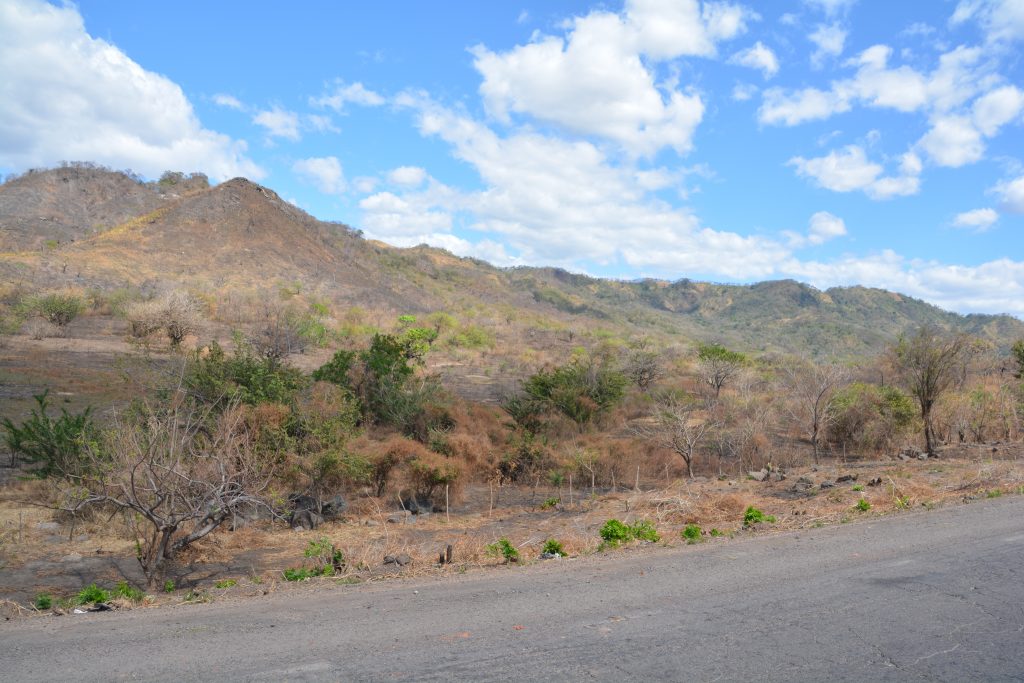
This is winter but it is also the dry season when the temperatures are high and the rain is non-existent
Our day of three countries started with the temperature in the low 90’sF/low 30’sC before mid-morning. The dry brown hills of southern El Salvador gave no hint of life for crops or cattle. Passing out of El Salvador was quite easy, only a few minutes to clear Immigration and get our Vehicle Import Permit cancelled, then we started the allegedly more challenging process of passing into Honduras.

After working our way through another border we were pleasantly surprised by the road and some of the houses in Honduras
Paperwork in Central America is always agonisingly slow, usually in triplicate with few computers, no one is in a hurry. But to enter Honduras we stood in all the queues, repeatedly apologised for our bad Spanish, completed all the necessary forms, paid the fees, got the stamps, passed through the endless checkpoints and were on our way inside of 45 minutes. We’re getting good at this.
Before entering Honduras I knew almost nothing about the country but after driving 80 miles over a period of four hours I’m an expert. Honduras has been described as the basket case, or banana republic (in 1913 bananas from large American companies accounted for 66% of the country’s economy) of Central America and its mix of corruption, drugs and poverty has dealt a serious blow to its citizens’ growth and prosperity. The complexity of their ethnic mixes, their historical dependency on foreign powers and ongoing struggle between the right wing and left wing has left Honduras in the battered slow lane.
But hang on, these roads were great, brand new, in fact so new there were no stripes on them and no road signs anywhere, and initially we made good time. We were impressed with all the infrastructure building that we saw, besides the road there was large bus stops, overhead walking bridges and huge roundabouts at intersections (although one roundabout was not quite finished so they diverted oncoming traffic through the roundabout in the wrong direction).
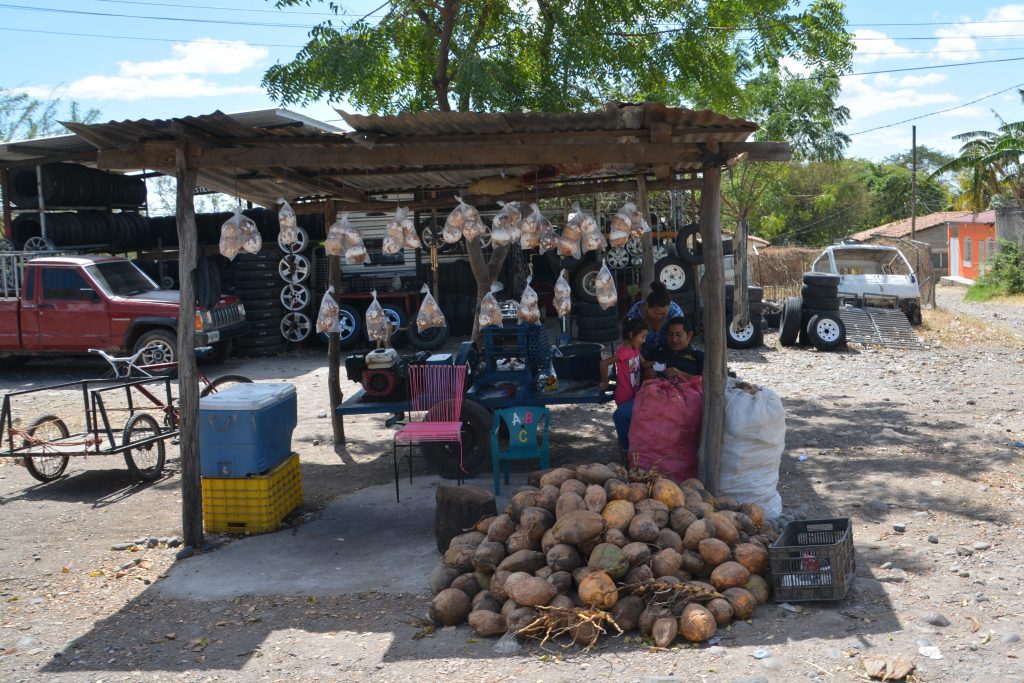
Roadside stalls often tell they story of the surrounding area in terms of what is available to buy and how prosperous it is
This section of road is part of what is dubbed the Pan-American Highway which runs from Alaska to the southern most tip of South America. The Pan-American Highway has a significant international following and profile and is the subject of much media and the path of many travellers, hence why perhaps the Honduran government has recently invested in their small section of it.
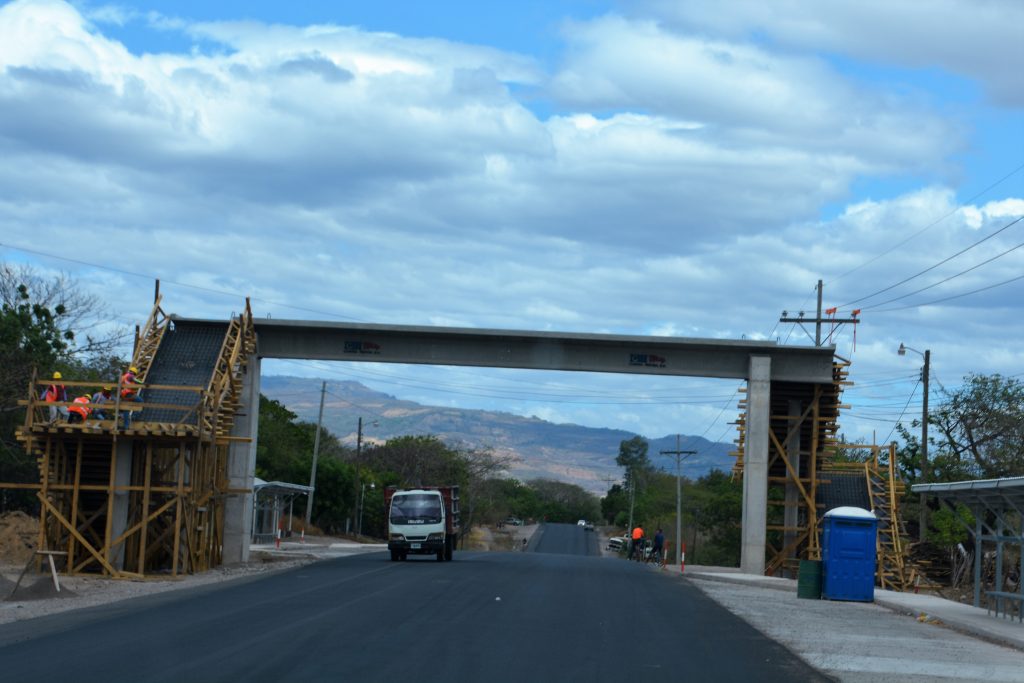
The Pan-American Highway had benefited from some recent investment by the Honduran government including new paving and flash new overhead pedestrian bridges (which no one will use)
Houses in the communities and along the roadside also looked a bit better than we were used to seeing and we had the general impression that there was some prosperity in this region. You wouldn’t know it by the desert brown mountains, dry riverbeds and thin bony cattle that wandered around but there must be something good happening around here.

Another nice house with some obvious money invested in it. If you look carefully on the right hand side of the building behind a red flowering bush you can see the armed guard sitting in the shade.
We stopped in Choluteca to have lunch and pick up supplies at a local supermarket but when we hit the road again we diverted off the Pan-American Highway and the road immediately reverted to a rough pock-marked poor mess of a highway and the houses also became much more modest. The people here were clearly doing it much tougher. And the weather wasn’t helping, despite it being mid winter Tramp’s thermometer topped out at 101 degrees F, about 39 degrees C. How do these people in their simple mud huts survive summers?
The border process was now becoming quite familiar to us. Exiting a country was relatively easy, a passport check, then a short process to cancel Tramp’s temporary import permit. Honduras bade us farewell with not much more than a wave and then it was on to the notoriously complex and difficult process of entering Nicaragua.
Patience is the key. Don’t get frustrated or indignant or snicker at the process and be very careful about the ‘fixers’ who hang around these dusty borders offering to help you through the process but sometimes end up making it much worse for outrageous fees.
So just for fun, here is the process to cross into Nicaragua at the Guasaule border crossing. (We chose this crossing over another because we had read online that the other crossing required tourists to apply for entry online in advance but this border did not. Go figure.) First stop was to get our tires fumigated, cost $3.75 at a little booth off to the side. A guy walked around our truck and sprayed our four tires. Really.
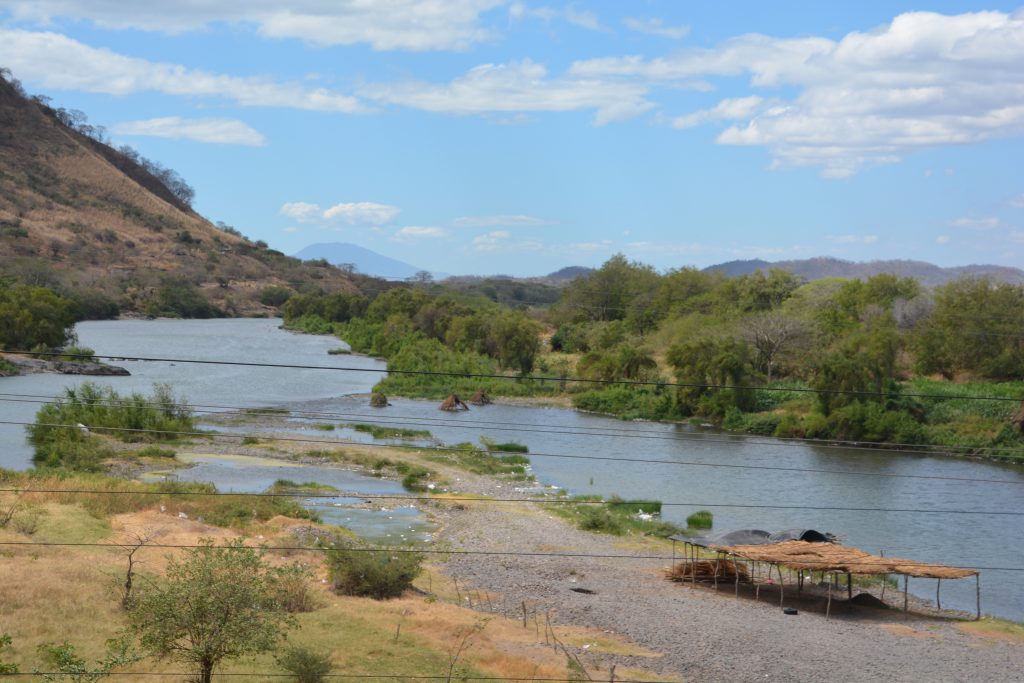
We never get tired of the scenery as we drive along – it is always changing and filled with small wonders, like these shelters near the river’s shore and small teepee-type structures in the water further upstream
Next stop, get Tramp inspected based on the Customs form Julie has filled in. Customs officials are no-nonsense humourless sort of people and we were asked about drugs, weapons and animals. They looked in our back seat where our clothes are but accepted our explanation of the camper as where we sleep. For some reason the border guards never ask us to open up the back of Tramp, perhaps because they don’t think it does open.
Next stop, Immigration, pay $10 each for a tourist card plus $2 each for a customer service fee. Get two receipts, one of them in triplicate with carbon paper between the copies. This takes a long time in a room which uses a furnace as an air conditioner. I’m starting to smell bodies and hope its not mine.
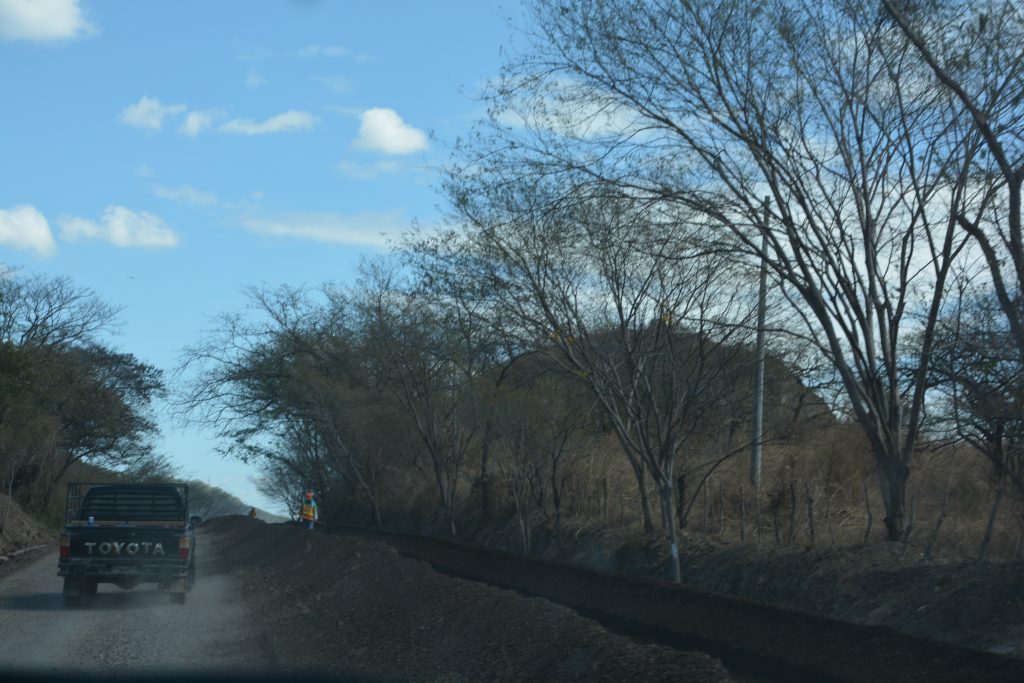
Roadwork is a constant factor and sometimes it appears to be permanent. At this spot they were actually moving dirt around, sometimes with a shovel, which we thought showed progress.
Next stop, always the worst, stand in a long slow queue to get a Temporary Import Permit for Tramp. The lady hates her job, hates foreigners and doesn’t speak a word of English. I keep smiling, answer her questions and eventually she gives in and issues me the permit.
I have been shadowed by this fixer who wants to be paid something without earning it. But he does stop me at the end and asks if I have bought insurance. We bought insurance in Guatemala which covers a number of countries, including Nicaragua, but we’ve heard that sometimes it is not honoured by some countries. We decide to buy specific insurance for Nicaragua, just to be safe, and a girl fills in a form and relieves me of another $12. We’re almost there but first I have to tip my fixer and he groans when its only $3. “Come on man, make it $5”. I decline the suggestion.
Then it is one last police check, passports and import permit come out again, they want to see our receipt for the tourist card, they keep our customs declaration, so many papers of all sizes passing back and forth so many times, then the final wave of the hand and a reluctant “Bienvenidos” and we’re in Nicaragua. Total time to get into Nicaragua: 2 hours. Based on what we’ve read online that’s about average for this border.
The day is coming to a close so about 5 kilometres into Nicaragua we pull into a huge dusty lot where semi-trailer trucks park for the night before or after crossing the border. There are cold showers, a blessing after all this heat, stress and dust, and we live amongst the huge trucks and their drivers. It was a hellova day, as they say, and we survived three countries in one day.


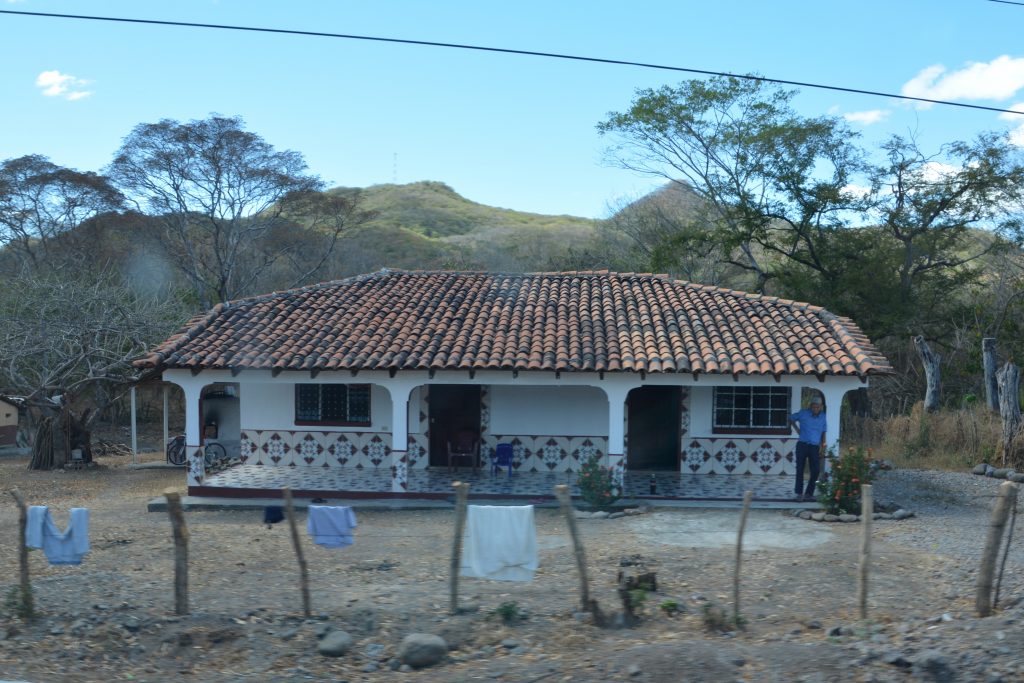



Comments
Three countries in one day — No Comments
HTML tags allowed in your comment: <a href="" title=""> <abbr title=""> <acronym title=""> <b> <blockquote cite=""> <cite> <code> <del datetime=""> <em> <i> <q cite=""> <s> <strike> <strong>